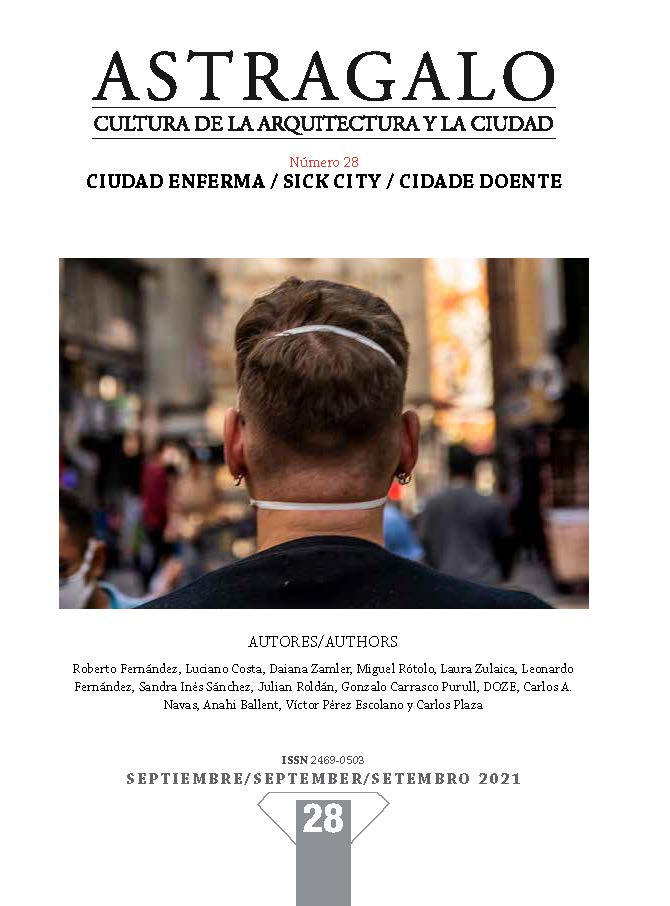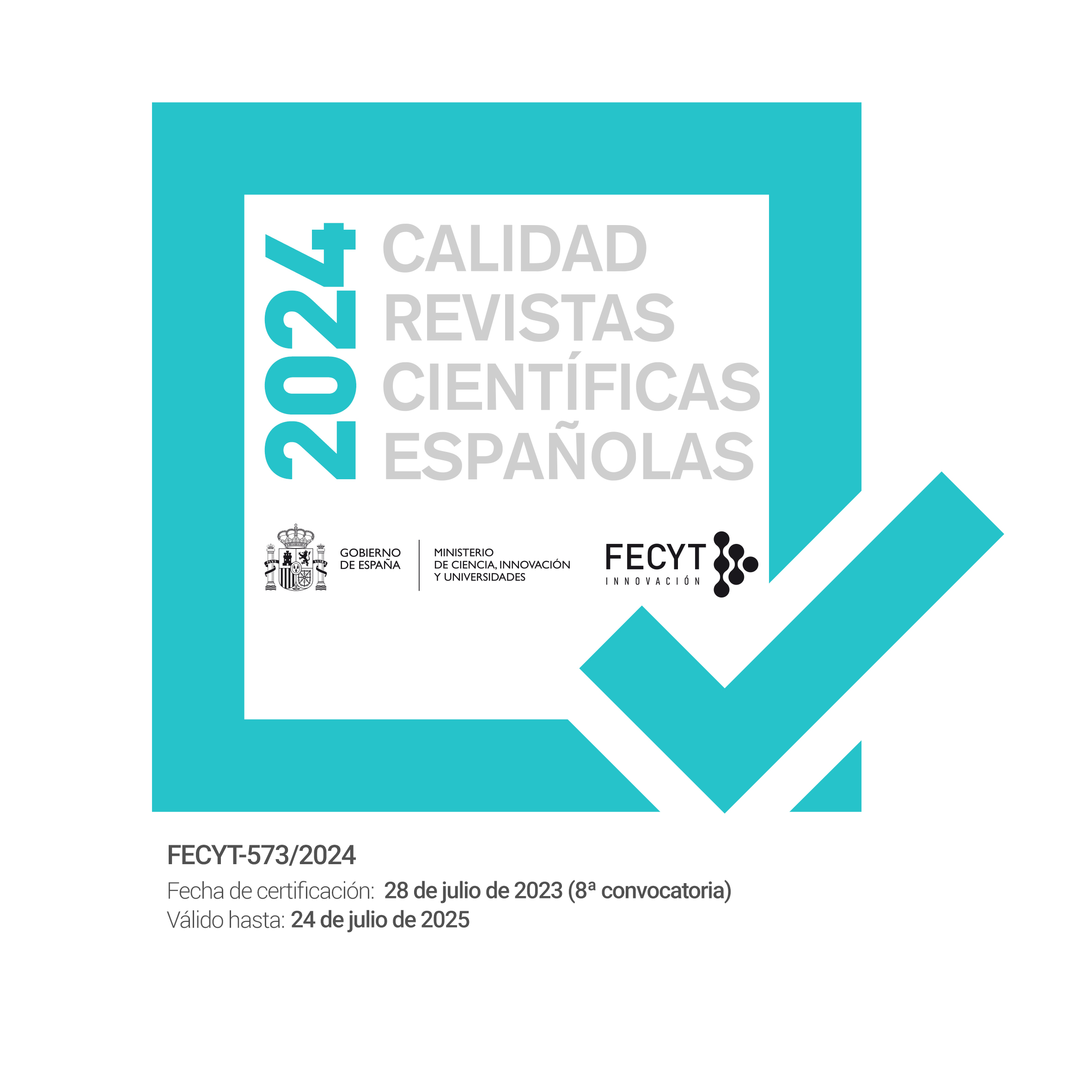Variations on El Eternauta
Analogies, primary scenes and a poetics for the myth in the first version of El Eternauta.
DOI:
https://doi.org/10.12795/astragalo.2021.i28.07Keywords:
Eternauta, primary scenes, argentine comic, Oesterheld, Solano LópezAbstract
The present article aims to critically analyze the comic strip El Eternauta by referring to some sociopolitical, economic and urban events from the time it was originally published. As Laura Vázquez (2010) notes, some of these events had influence on editorial policies -which sought to make their publications profitable in a context of economic adversity and which had even had an impact on Oesterheld himself, who had had to close his Frontera publishing project- in the publication formats, conditions and means of circulation, -many were changed to be published every fortnight or monthly- "as well as in the themes of these comics and in the ways of approaching them in response to a certain situation" (Vázquez, 2010: 63). These socio-economic conditions marked certain policies and actions in relation to the mode of production of anything urban, and this new configuration of the metropolitan structured new social dynamics and functioned as a stage for new urban actors as a result of the possibilities of ascending in the social hierarchy. The emergence of the popular classes in the city can be read critically in various texts written during this period and El Eternauta is not exempt. Sasturain (1995) marks the importance of the change of address for the development of the adventure in Oesterheld's work, a transformation that achieves, complemented with the graphic poetics of Solano López, to configure a primary scene (Berman, 1991) that acquires the capacity to resonate with the reader in a deeply original way that makes El Eternauta a classic of the comic with multiple interpretations. Here, we will analyze some of the various possible analogies with which it can be interpreted based on the authors before named.
Downloads
References
AAVV. 1993. La Argentina en pedazos. Buenos Aires, Ediciones de la Urraca.
Aguilar, Miguel Ángel. 2006. “La dimensión estética en la experiencia urbana.” En Lugares e imaginarios en la metrópolis, editado por Alicia Lindón, Miguel Ángel Aguilar y Daniel Hiernaux, 137-149. Barcelona: Anth-ropos / México, UAM.
Berman, Marshall. 1991. Todo lo sólido se desvanece en el aire: La experiencia de la modernidad. Buenos Ai-res, Siglo XXI.
Burke, Peter. 2005. Visto y no visto. El uso de la imagen como documento histórico. Barcelona, Crítica.
Ferrer, Aldo. 2008. Ahorro interno y capital extranjero: la estrategia del gobierno de Frondizi. Buenos Aires, Visión Desarrollista.
Fernández, Laura Cristina. 2012. Historieta y resistencia: arte y política en Oesterheld (1968-1978). Mendo-za, Editorial de la Universidad Nacional de Cuyo, Ediunc.
Gociol, Judith y Rosemberg, Diego. 2001. La historieta argentina: Una historia. Buenos Aires, De la Flor.
Jajamovich, Guillermo. 2009. “Buenos Aires, Sus transformaciones urbanas y la perspectiva de los investiga-dores: aproximaciones, críticas y problemas en torno a su dimensión internacional urbe.” En Revista Brasi-leira de Gestão Urbana Vol. 1, núm. 2, julio-diciembre: 179-189. Pontifícia Universidade Católica do Paraná, Brasil.
Oesterheld, Héctor Germán y Solano López, Francisco. 1975. El Eternauta. Buenos Aires, Ediciones Record.
Oesterheld, Héctor Germán y Solano López, Francisco. 1978. El Eternauta. Segunda Parte. Buenos Aires, Edi-ciones Record.
Sarlo, Beatriz. 1998. Una modernidad periférica: Buenos Aires 1920 y 1930. Buenos Aires, Nueva Visión.
Sasturain, Juan. 1993. El Domicilio de la Aventura. Buenos Aires, Colihue.
Sasturain, Juan. 2013. “Continuará: Visiones de los 80 (de la dictadura a la actualidad).” https://www.youtube.com/watch?v=5gF6Afhdl9I, Canal Encuentro.
Silvestri, Graciela y Gorelik, Adrián. 2000. “Ciudad y Cultura urbana, 1976-1999. El fin de la expansión.” En Buenos Aires: Historia de cuatros siglos, editado por Luis Alberto Romero y José Luis Romero. Altamira.
Steimberg Oscar. 1997. Leyendo historietas. Nueva visión.
Trillo, Carlos y Saccomanno, Guillermo. 1980. Historia de la Historieta Argentina. Buenos Aires, Ediciones Record.
Vázquez, Laura. 2010. El oficio de las Viñetas: La industria de la historieta argentina. Buenos Aires, Paidós.
Vázquez, Laura. 2012. Fuera de Cuadro: Ideas sobre historieta. Buenos Aires, Agua Negra.
Vázquez, Laura. 2006. “Cuadros y márgenes: los lazos entre historieta, arte y cultura.” En Deslindes: Ensayos sobre la literatura y sus límites en el siglo XX, editado por Beatriz Viterbo. Rosario.
Downloads
Published
How to Cite
Issue
Section
License
Copyright (c) 2021 Julián Roldán

This work is licensed under a Creative Commons Attribution-NonCommercial-ShareAlike 4.0 International License.


















